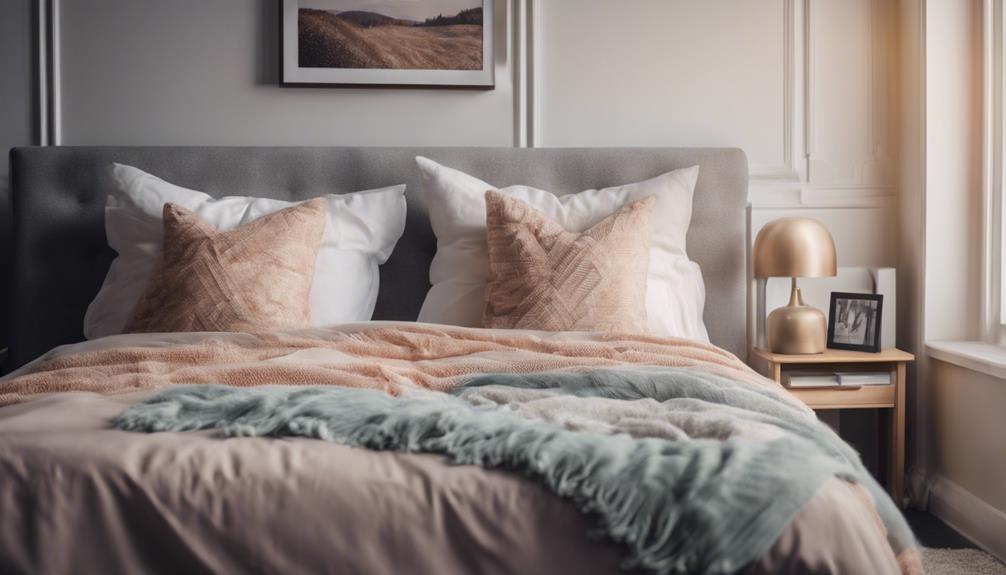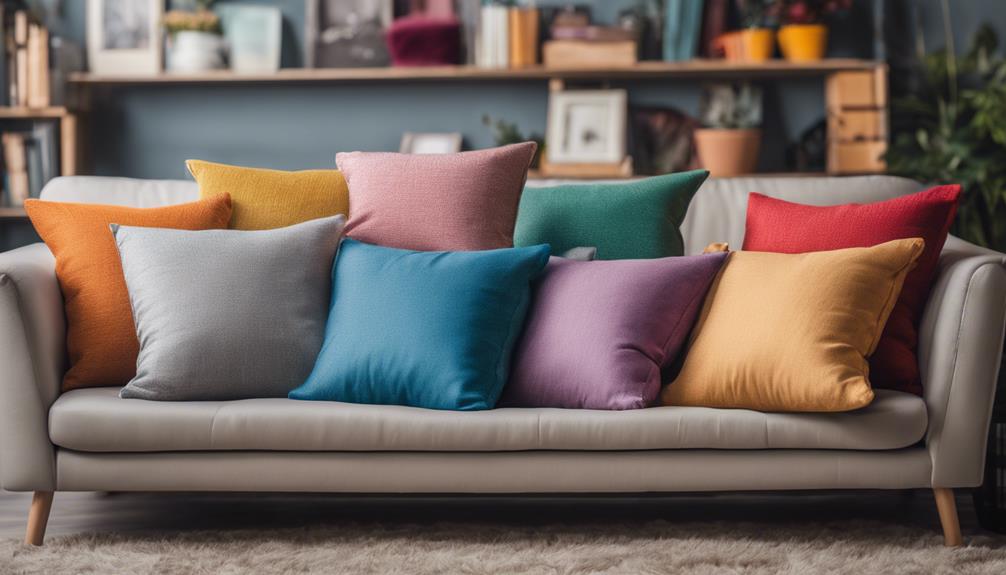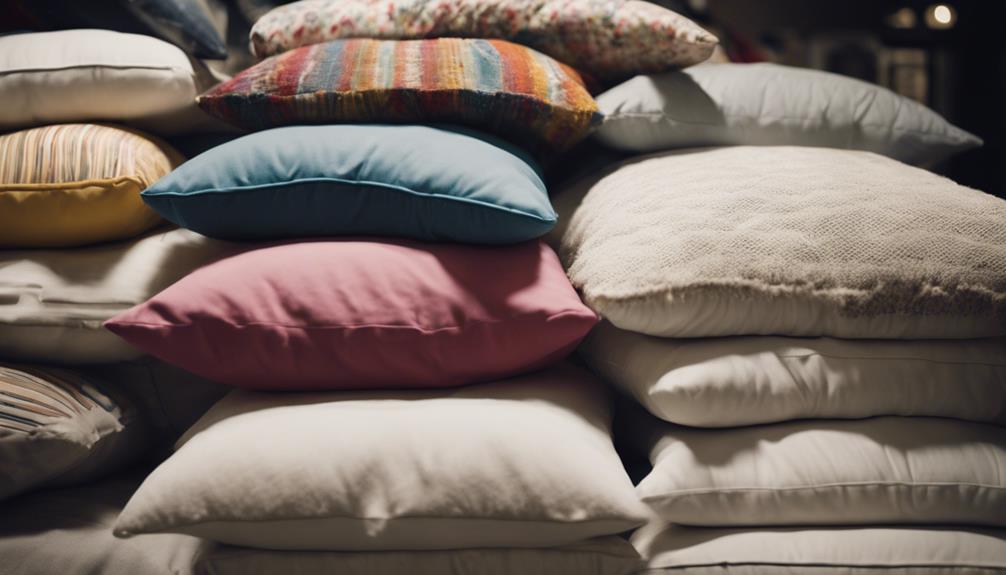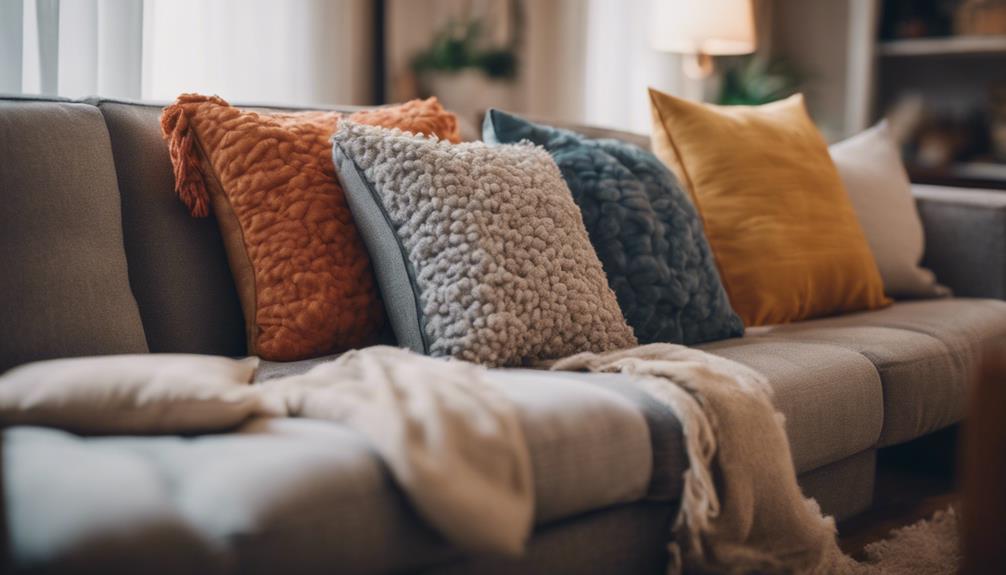In the late 1330s, Flemish weaver Thomas Blanket of Bristol was a pioneer in creating superior woolen bed coverings, which earned him a reputation for excellence. His innovative techniques and high-quality products led to the widespread use of the term ‘blanket.’ King Edward III’s support for English cloth trade further popularized woolen bed coverings, with Blanket’s workshop playing a crucial role. The evolution of the name ‘blanket’ is closely linked to Blanket’s creativity and the impact of royal endorsements. This historical connection provides insight into the origins of the term and the craftsmanship that characterized early blanket production. Further details can be found within the historical tapestry.
Key Takeaways
- Term 'blanket' attributed to Flemish weaver Thomas Blanket for his quality woolen bed coverings.
- Thomas Blanket's workshop in Bristol revolutionized blanket production, popularizing the term.
- King Edward III's support for English cloth trade boosted the blanket market.
- Blankets historically symbolized wealth and status, used in rituals and funerary practices.
- Evolution of blanket designs from primitive to sophisticated materials influenced by global trade routes.
Historical Origins of the Term
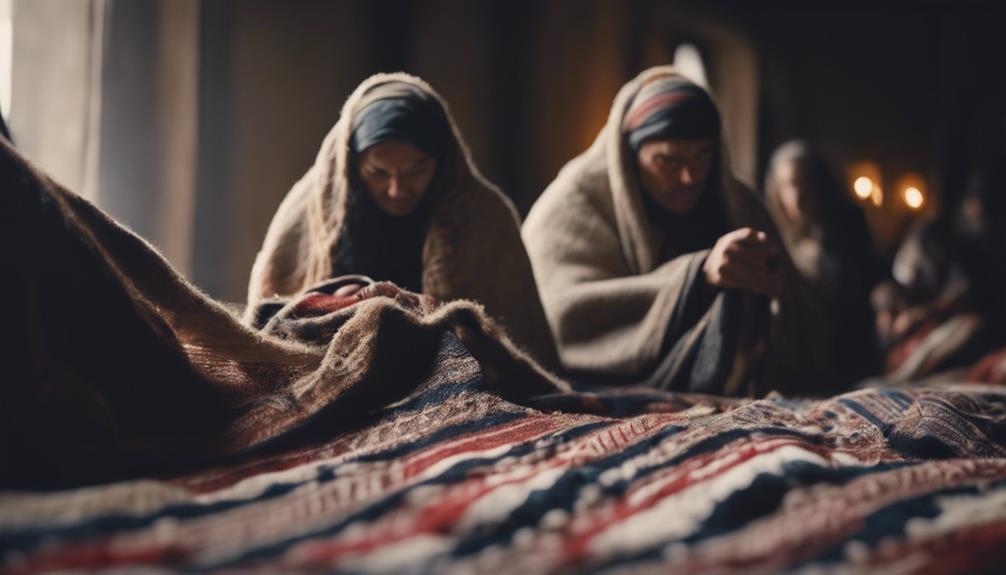
The term 'blanket' finds its historical origins in the name of a Flemish weaver, Thomas Blanket, who operated a successful weaving workshop in Bristol during the late 1330s. Thomas Blanket's innovative industrial methods and production of high-quality woolen bed coverings made a substantial contribution to the popularity and affordability of blankets.
King Edward III's efforts to boost England's cloth trade further propelled the demand for Thomas Blanket's products, making them fashionable among the masses. As a result of Thomas Blanket's reputation for excellence in weaving, his name became synonymous with the product itself, eventually leading to the widespread adoption of the term 'blanket' to describe these bed coverings.
The weaving industry in Bristol, including Thomas Blanket's workshop, played a pivotal role in the evolution and dissemination of blankets as essential household items, solidifying their place in history as indispensable pieces of bedding.
Influence of Thomas Blanket
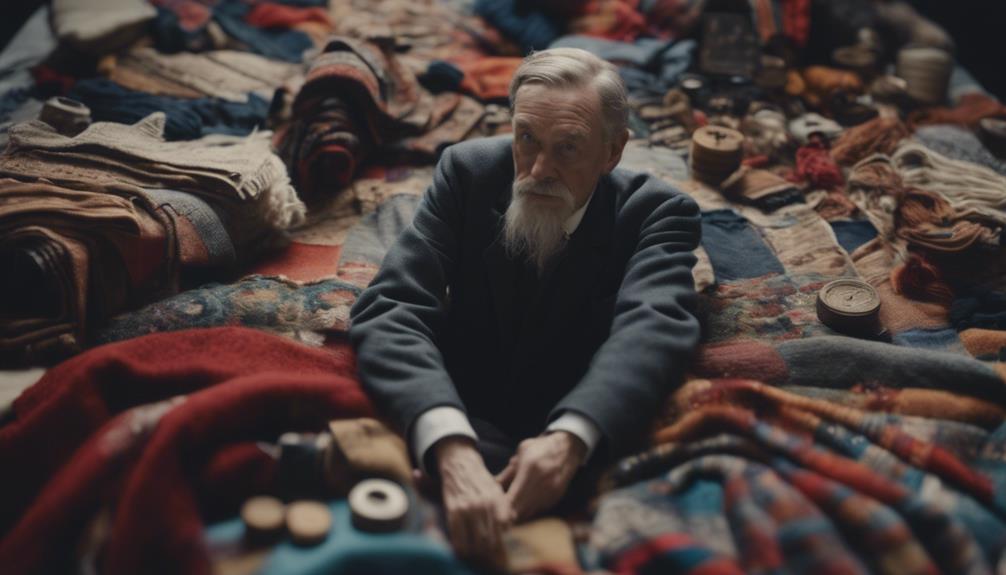
Operating his weaving workshop in Tucker Street, Bristol during the late 1330s, Thomas Blanket revolutionized the production of woolen bed coverings, leaving a lasting impact on the cloth industry. Blanket's workshop was known for its innovative industrial production methods, attracting attention for its efficient processes and high-quality woollen cloth.
The name 'blanket' became synonymous with the exceptional products crafted by Thomas Blanket, reflecting the superior quality and craftsmanship of his goods. King Edward III recognized the significance of Blanket's contributions and took steps to support the English cloth trade by restricting foreign imports, a move that further solidified Blanket's influence on the industry.
The term 'blanket' likely originated from Thomas Blanket's pioneering work, cementing his legacy in the history of woollen cloth production and forever associating his name with the cozy bed coverings we use today.
Royal Support for English Cloth Trade

King Edward III's support for England's cloth trade included restrictions on foreign imports, boosting the local industry. These initiatives not only endorsed the production of English cloth but also had a significant economic impact.
The royal backing paved the way for the growth and prominence of England's cloth trade, shaping industries like Bristol's weaving sector and Thomas Blanket's workshop.
Royal Cloth Endorsement
With Royal endorsement, the English cloth trade received a substantial boost under King Edward III's administration through restrictions on foreign imports. Thomas Blanket's workshop in Bristol, known for its innovative industrial production methods, contributed significantly to the evolution of the woollen cloth industry. The term 'blanket' likely originated from the association with Thomas Blanket's production, making woollen bed coverings more accessible and fashionable. Bristol's weaving industry, particularly Thomas Blanket's workshop, played an essential role in popularizing blankets.
| Royal Cloth Endorsement | |
|---|---|
| Benefit | Boosted domestic production |
| Impact | Restricted foreign imports |
| Result | Increased popularity of English cloth |
Trade Boosting Initiatives
To bolster the English cloth trade, royal initiatives were implemented to restrict foreign imports and promote domestic production for increased tax revenues. King Edward III's policies aimed at limiting foreign cloth imports played a pivotal role in boosting England's cloth trade.
The industrial production methods introduced by Thomas Blanket in Bristol revolutionized the manufacturing process, making woollen bed coverings more affordable and fashionable. The remarkable output from Thomas Blanket's workshop not only met the rising demand for blankets but also influenced the evolution and popularity of these essential household items.
Bristol's weaving industry, particularly exemplified by Thomas Blanket's innovative techniques, played a crucial role in the growth of the blanket market. These initiatives laid the foundation for England's dominance in the cloth trade, shaping the industry for generations to come.
Economic Impact Significance
The rise of England's cloth trade prosperity was greatly bolstered by royal support through strategic economic initiatives that aimed to enhance domestic production and limit foreign competition. King Edward III's restrictions on foreign cloth imports played a pivotal role in boosting domestic production, ultimately leading to the economic impact and significance of blankets.
Thomas Blanket's innovative industrial production methods not only made woollen bed coverings more affordable and fashionable but also contributed to the overall growth of England's cloth trade. Policies geared towards increasing profitability in the cloth trade industry, such as those implemented in Bristol's weaving industry where Thomas Blanket's workshop was located, highlighted the economic importance of blankets as a lucrative commodity for higher tax revenue.
Evolution of the Blanket Name
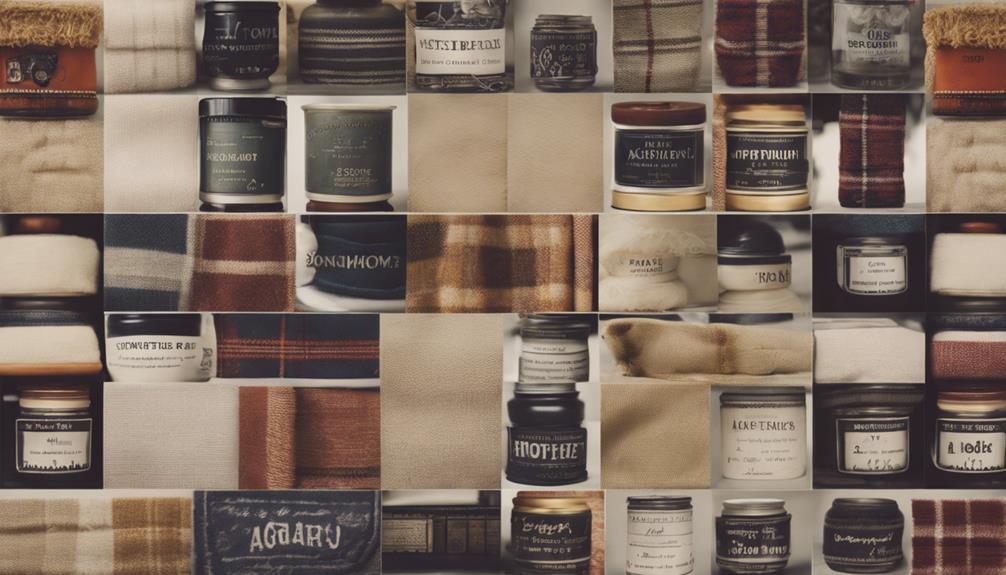
Originating from the name of Flemish weaver Thomas Blanket in medieval Bristol, the term 'blanket' reflects a historical evolution deeply rooted in England's cloth trade history. Thomas Blanket, a prominent figure in the late 1330s, ran a successful weaving workshop known for its industrial production methods. King Edward III's initiatives to enhance England's cloth trade likely played a role in making woollen bed coverings, associated with Thomas Blanket, popular and affordable.
The substantial cloth output from Blanket's workshop led to his name becoming synonymous with the product, hence the term 'blanket.' While not definitively proven, historical evidence supports the legend of Thomas Blanket's involvement in the invention of blankets, with ties to towns like Witney in Oxfordshire. The evolution of the blanket name showcases how a skilled weaver's reputation and innovative techniques can leave a lasting legacy, shaping the terminology we use today.
Cultural Significance of Blankets
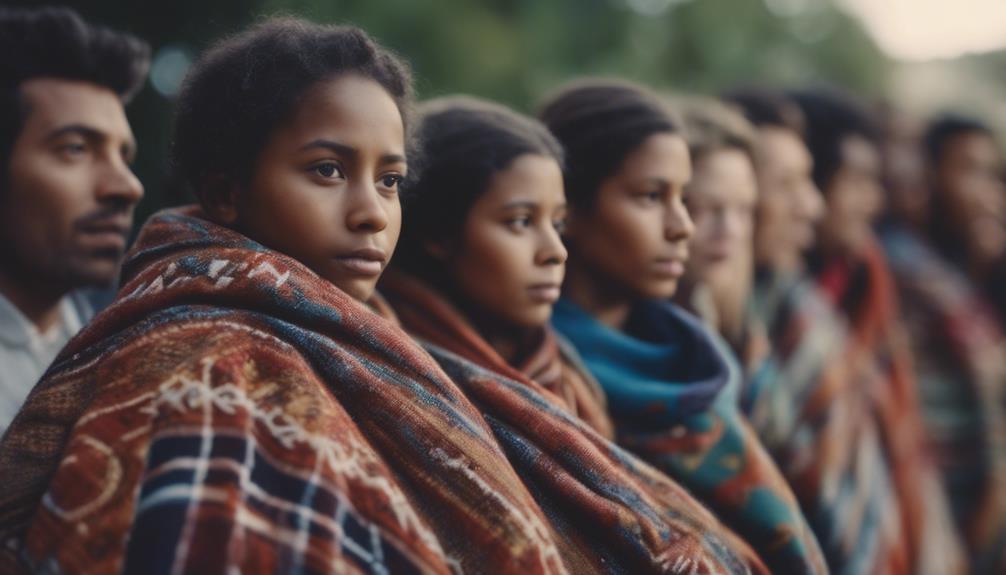
Reflecting the warmth, comfort, and status they provided, blankets held significant cultural value in ancient civilizations such as Egypt, Rome, and China. Skilled artisans meticulously crafted these blankets using materials like linen, wool, and silk. Blankets symbolized social status, often being intricately woven to showcase wealth and prestige. In rituals and funerary practices, these blankets played essential roles, signifying honor and respect for the deceased.
Trade routes like the Silk Road facilitated the global spread of blankets, emphasizing their importance in ancient societies. The production and usage of blankets not only provided physical warmth but also reflected the wealth and cultural practices of diverse civilizations. The term 'blanket' itself has an interesting origin, possibly deriving from Thomas Blanket (Blanquette), a renowned English cloth merchant. This link between the name and a prominent figure in the textile trade further underscores the cultural significance blankets held throughout history.
Blankets in Early Civilizations
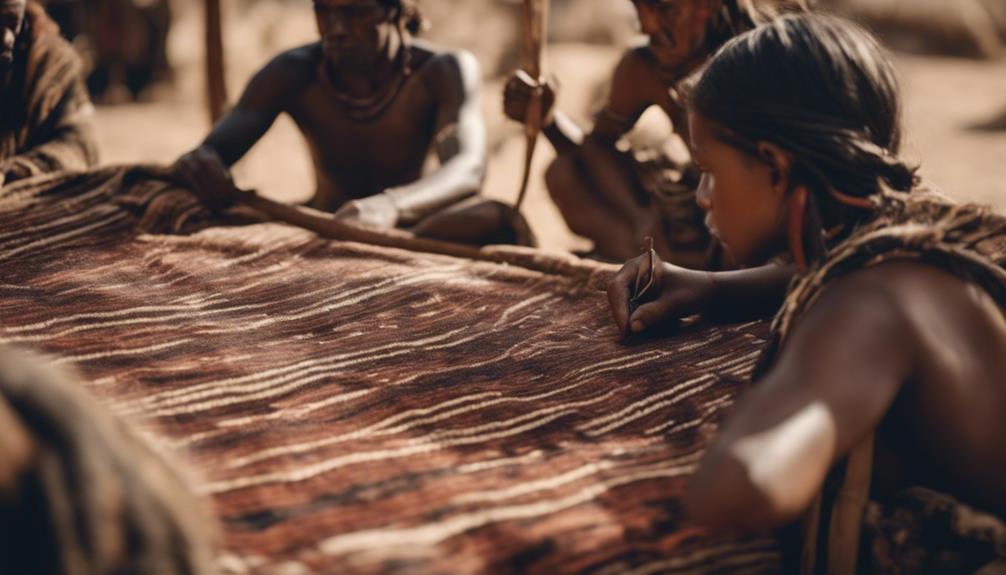
Early civilizations like the Egyptians, Romans, and Chinese valued blankets for warmth, comfort, and status. Skilled artisans in ancient societies used materials such as linen, wool, and silk to create these essential items.
Blankets symbolized social standing and were integral to rituals and funerary practices, showcasing their significance in early civilizations.
Ancient Blanket Origins
Craftsmen in ancient civilizations such as the Egyptians, Mesopotamians, Greeks, Romans, and Chinese skillfully fashioned blankets from materials like linen, wool, and silk, underscoring their significance in both practical and ceremonial contexts. These early blankets, known as "Thomas Blankets" or "Blanquettes," served various purposes beyond mere warmth, playing essential roles in rituals, funerary practices, and symbolizing social status and wealth. The intricate weaving techniques and luxurious materials used in blanket production showcased the craftsmanship of these ancient societies. Trade routes like the Silk Road further facilitated the exchange of blankets, highlighting their cultural importance and widespread accessibility. The historical evolution of blankets reflects the diverse cultural practices and symbolic meanings attached to them in early civilizations.
| Ancient Blanket Origins | |
|---|---|
| Craftsmen | Materials |
| Egyptians | Linen |
| Mesopotamians | Wool |
| Greeks | Silk |
Cultural Significance of Blankets
Blankets in ancient civilizations like Egypt, Rome, and China held significant cultural value for warmth, comfort, and social standing. They were intricately crafted by skilled artisans from materials such as linen, wool, and silk. The blankets symbolized wealth and status in various rituals and funerary practices, showcasing the craftsmanship and cultural traditions of early societies.
Trade routes like the Silk Road facilitated the global exchange of blankets, influencing cultural practices. Thomas Blanket (Blanquette) was known for his intricate designs, shaping the social fabric of these ancient civilizations.
The production of blankets reflected the wealth and craftsmanship of these societies, emphasizing the importance of blankets beyond mere utility and contributing to their cultural significance.
Evolution of Blanket Designs
Throughout the annals of history, the development of blanket designs in early civilizations showcases a remarkable shift from primitive animal skins to sophisticated textiles crafted from wool and plant materials.
In ancient times, blankets were more than just items for warmth; they symbolized social status and played essential roles in rituals and funerary practices. Skilled artisans, like Thomas Blanket (Blanquette), were pivotal in blanket production, using materials such as linen, wool, and silk.
Civilizations like the Egyptians, Mesopotamians, Greeks, Romans, and Chinese each contributed their unique techniques and materials to blanket making. Trade routes like the Silk Road further facilitated the global spread of blankets, making them accessible to a wide range of societies, marking a significant evolution in blanket designs.
Technological Advancements in Blanket Making

With the integration of modern manufacturing techniques, the blanket making industry has witnessed significant technological advancements. Woolen blankets, once primarily handmade, have now evolved to include a wide range of options due to these innovations. Computer-aided design (CAD) software has revolutionized the design process, allowing for intricate patterns and precise detailing. Modern weaving and knitting machines have increased production efficiency, enabling faster creation of woolen blankets in bulk quantities.
Additionally, new finishing technologies like brushing and napping have enhanced the texture of woolen blankets, making them softer and more comfortable. Digital printing has also made high-resolution designs directly on blankets possible, offering a wide array of choices for consumers. These advancements haven't only improved the quality of woolen blankets but have also expanded the variety available in the market.
As technology continues to advance, the blanket industry is poised to offer even more innovative and high-quality products to meet the diverse needs of consumers.
Role of Synthetic Materials
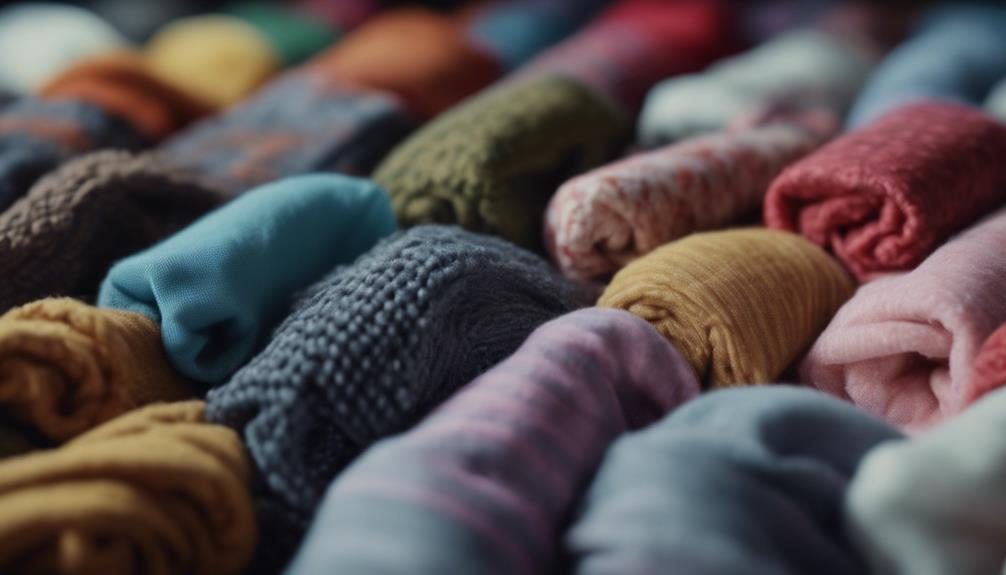
Synthetic materials have revolutionized the blanket industry, offering durability and affordability unmatched by traditional options. Polyester, acrylic, and microfiber have become popular choices for blankets due to their easy care, insulation properties, and a wide range of colors and patterns. French textile engineer Joseph Decker played a pivotal role in inventing the first synthetic blanket, paving the way for enhanced comfort and longevity in bedding. The development of synthetic fibers has further enabled the creation of luxurious blends like cotton and polyester in modern blankets, combining the best of both materials for maximum comfort.
These synthetic blankets have gained popularity for their convenience, cost-effectiveness, and machine washable properties. They cater to a wide range of consumer needs, offering a practical solution for those seeking quality bedding without breaking the bank. The utilization of synthetic materials in blankets has greatly impacted the industry, providing consumers with a durable and affordable option that meets modern comfort standards.
Modern-Day Blanket Industry

The evolution of modern-day blankets encompasses a diverse array of materials and manufacturing techniques that cater to a wide range of consumer preferences and needs. Wool blankets, a timeless classic, remain popular for their exceptional warmth and natural properties. In the modern blanket industry, wool blankets are prized for their breathability, moisture-wicking abilities, and sustainability.
While synthetic blankets offer benefits like durability, easy care, and hypoallergenic properties, wool blankets provide a natural alternative with similar insulation capabilities. Technological advancements have enhanced wool blanket production, resulting in softer textures and improved dyeing processes. Additionally, sustainable alternatives like organic wool are gaining traction, aligning with the industry's shift towards eco-friendly practices.
The modern-day blanket industry continues to innovate, offering consumers a wide selection of materials and designs to suit their individual preferences and values.
Frequently Asked Questions
How Did Blankets Get Their Name?
Blankets got their name from the Middle English term 'blanket' borrowed from French around 1300. The term likely originated from 'blanke', a fabric, possibly named after Flemish weaver Thomas Blanket.
William Shakespeare used the verb 'blanket' in 'King Lear' in 1608. Thomas Blanket, a successful weaver in Bristol, produced woollen cloth in the late 1330s.
King Edward III's cloth trade policies may have linked the term to fashionable bed coverings.
What Is the Old Name for Blankets?
We used to call blankets 'blanke,' tracing back to Old French 'blanket' from 'blanc.' The term might've ties to Thomas Blanket, a Flemish weaver in Bristol. Shakespeare first used 'blanket' in 'King Lear' in 1608.
Early blankets like the 'Kambala' noted by Xuanzang in the 7th century showed diverse types. Old Indian blankets like keca-lakah and kalamitika had specific uses and materials.
This rich history shapes our understanding of blankets today.
When Was the Word "Blanket" First Used?
The word 'blanket' was first used in Middle English around 1300, borrowed from French. It stemmed from the Old French word 'blanket,' originating from 'blanc,' meaning white.
Shakespeare employed 'blanket' as a verb in 'King Lear' in 1608. The modern written English frequency of 'blanket' is approximately 10 occurrences per million words.
Importantly, the pronunciation varies between British (/ˈblaŋkɪt/) and U.S. English (/ˈblʌŋkɪt/).
What Makes a Blanket a Blanket?
Blankets are defined by their ability to provide warmth and comfort. They come in various sizes and materials, such as wool, cotton, and even silk.
A fascinating aspect is that blankets can serve multiple purposes, not just for keeping us warm but also as picnic spreads or temporary covers. This versatility makes them essential in our lives.
Their evolution from ancient forms like the 'Kambala' shows how blankets have been a part of human history for centuries.
What is the History and Origins of the Term “Blanket”?
The term “blanket” has its origins in the Old French word “blanc,” meaning white. In the past, blankets were often made of white wool. Over time, the term expanded to refer to any large piece of cloth used for warmth. This history provides some reasons for pricey throw blankets.
Conclusion
As we wrap up our exploration of why blankets are called blankets, it's clear that these cozy coverings have a rich history and cultural significance.
From their origins in early civilizations to the technological advancements in modern blanket making, these essential items have evolved over time.
So next time you snuggle up under a blanket, remember the centuries of history and craftsmanship that went into creating this comforting companion.
Stay warm and cozy, friends!
